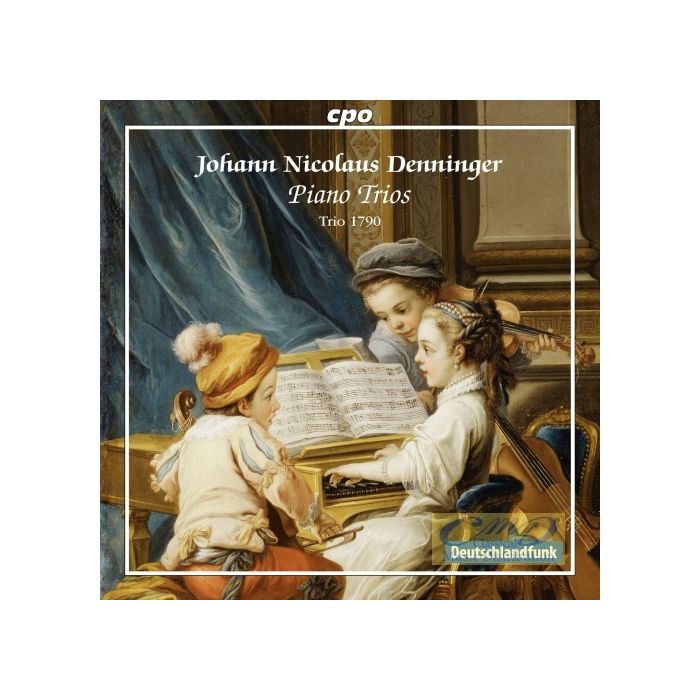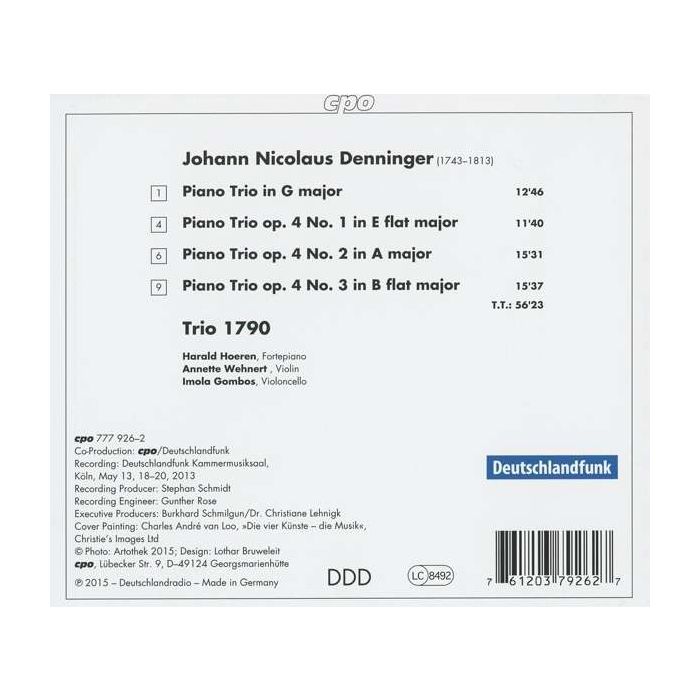
(Produkt nie został jeszcze oceniony)
kompozytor
Denninger, Johann Nicolaus
tytuł
Denninger: Piano Trios
wykonawcy
Denninger, Johann Nicolaus, Trio 1790
nr katalogowy
CPO 777 926-2
opis
Johann Nicolaus Denninger numbers among the many musicians from the second half of the eighteenth century who in their multiple roles as instrumentalists, composers, and responsible music directors contributed not inconsiderably to tilling the field for the greats of their epoch. Denninger worked in Öhringen, the residence of Prince Ludwig Friedrich Carl von Hohenlohe-Neuenstein, as the music director of the court ensemble from 1780 to 1800 and was also in charge of church music. He had to produce compositions for both areas. Unfortunately, only a few of his instrumental works are extant, and in them his main instrument, the harpsichord or the fortepiano then coming into fashion, occupies the focus. Formally and stylistically, these works represent the state of development during the last two decades of the eighteenth century, a period for which Haydn and Mozart set the decisive standards. The allegro first movements of Denninger’s works – with one exception – are in 4 / 4 time and obliged to the sonata form; the mirthful concluding movements of folk character exhibit rondo forms in their diverse playing styles and are primarily maintained in a 6 / 8 time modeled on hunting signals; and both the courtly minuet with a trio and the andante of song character absolutely predestined for brilliant variations occur as the middle movements.
nośnik
CD x 1
wydawca
CPO
data wydania
12.08.2015
EAN / kod kreskowy
761203792627
42,00 zł
Produkt dostepny w niewielkiej ilości.
Wysyłka w ciągu 3 dni roboczych
Darmowa wysyłka dla zamówień powyżej 300 zł!
Darmowy kurier dla zamówień powyżej 500 zł!
sprawdź koszty wysyłki
